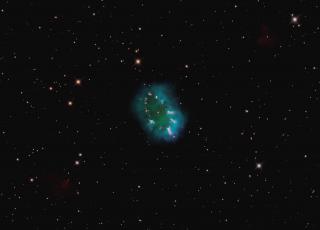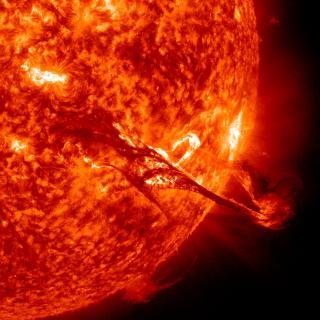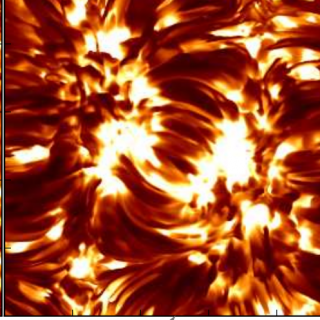Bibcode
Martínez González, M. J.; Asensio Ramos, A.; Manso Sainz, R.; Corradi, R. L. M.; Leone, F.
Bibliographical reference
Astronomy and Astrophysics, Volume 574, id.A16, 7 pp.
Advertised on:
2
2015
Journal
Citations
14
Refereed citations
13
Description
We carried out high-sensitivity spectro-polarimetric observations of the
central star of the Red Rectangle protoplanetary nebula with the aim of
constraining the mechanism that gives its biconical shape. The stellar
light of the central binary system is linearly polarised since it is
scattered on the dust particles of the nebula. Surprisingly, the linear
polarisation in the continuum is aligned with one of the spikes of the
biconical outflow. Also, the observed Balmer lines, as well as the Ca ii
K lines, are polarised. These observational constraints are used to
confirm or reject current theoretical models for the shaping mechanism
of the Red Rectangle. We propose that the observed polarisation is not
very likely to be generated by a uniform biconical stellar wind. Also,
the hypothesis of a precessing jet does not completely match
observations since it requires a larger aperture jet than for the
nebula.
Related projects

Bipolar Nebulae
This project has three major objectives: 1) To determine the physico-chemical characteristics of bipolar planetary nebulae and symbiotic nebulae, to help understanding the origin of bipolarity and to test theoretical models, mainly models with binary central stars, aimed at explaining the observed morphology and kinematics. 2) To study the low
Antonio
Mampaso Recio

Solar and Stellar Magnetism
Magnetic fields are at the base of star formation and stellar structure and evolution. When stars are born, magnetic fields brake the rotation during the collapse of the mollecular cloud. In the end of the life of a star, magnetic fields can play a key role in the form of the strong winds that lead to the last stages of stellar evolution. During
Tobías
Felipe García

Magnetism, Polarization and Radiative Transfer in Astrophysics
Magnetic fields pervade all astrophysical plasmas and govern most of the variability in the Universe at intermediate time scales. They are present in stars across the whole Hertzsprung-Russell diagram, in galaxies, and even perhaps in the intergalactic medium. Polarized light provides the most reliable source of information at our disposal for the
Tanausú del
Pino Alemán